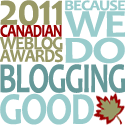
Today, the Globe and Mail reported that inflation in Canada has hit a two-year high of 2.4%. In response, I thought it was about time to discuss what inflation is, and what does it mean for the average Canadian?
Inflation is a rise in general level of prices for goods and services over a period of time. When inflation rises in Canada, our dollar buys fewer goods and services, which is referred to as a loss of purchasing power. For example, if the inflation rate is 2%, then a $1 pack of gum will cost $1.02 in a year.
Inflation in Canada is measured by the Consumer Price Index (CPI), a broad measure of the cost of living in Canada. Through the monthly CPI, Statistics Canada tracks the retail price of a representative shopping basket of about 600 goods and services used by the average household: food, housing, transportation, furniture, clothing, and recreation. Each category represents a different portion of the basket, based on typical spending patterns. Since people tend to spend more on food than clothing, changes in the price of food have a bigger impact on the index than changes in the price of clothing and footwear.
How is the CPI calculated?
Current prices are measured against a base year. The base year is currently 2002, and the basket for that year is given the value of 100. In 2009 the CPI had reached 115.5, meaning what you could buy for $100 in 2002 cost $115.50 in 2009. The Bank of Canada website has an interactive Inflation Calculator that uses monthly CPI figures from 1914 to the present to show users the impact of inflation on purchasing power.
What does that mean for investors?
Inflation affects the value of your money over time. Since prices generally increase over time, the value of your money decreases. Investing is an attempt to increase the value of your money over time. At minimum, you want your rate of return to be higher than the rate of inflation. If your money is sitting in a savings account making 1.5% interest, but inflation is 2.5%, you have actually lost purchasing power!
Thursday, we will look closer at how the Bank of Canada monitors and manages the inflation rate, aiming for a trget of 2% a year.
Any further questions about inflation, interest rates or the CPI? Feel free to ask below.
Related posts:
- Defining deflation Last week we discussed inflation and its consequences for investors....
- How is inflation managed? Digging a little deeper into the issue of inflation, today...
- How much do I need to contribute to my retirement savings? Well, between some pre-planned travel and conferences, and an unplanned...
- Investing for Retirement 2: What exactly is an RRSP, anyway? Before I go any further in blogging about RRSP deadlines...
- Bonds and Debentures A bond is a loan to a government or company...
Share & Bookmark This Story!
 Bookmark on Delicious
Bookmark on Delicious  StumbleUpon
StumbleUpon  Google Bookmarks
Google Bookmarks Tip'd
Tip'd 



{ 0 comments… add one now }